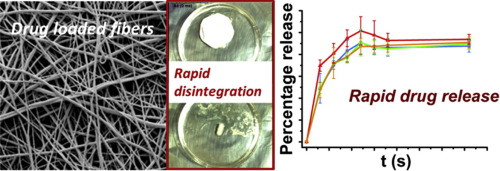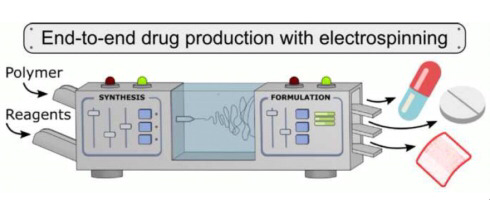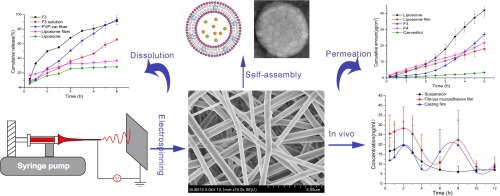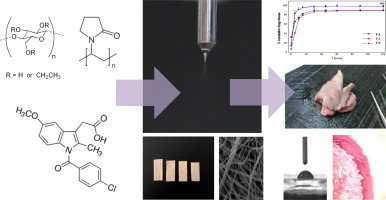- Home
- Blog
- News
- Basics
- Sources
- Agencies, Regulatory & Organisations
- CERSI Excipients Browser
- Excipient Report
- Excipient DMF List
- EXCiPACT Certified Companies
- Excipient Documentation
- Excipient EINECS Numbers
- Excipient E-Numbers
- FDA Inactive Ingredient List
- FDA GRAS Substances (SCOGS) Database
- IPEC Americas
- USP - U.S. Pharmacopeia
- Definitions
- Whitepapers / Publications
- Supplier
- Services
- Media
- Events
- 1st pharmaexcipients Poster Award
- Event Calendar
- Events featured by pharma-excipients
- 4th Annual Formulation & Drug Delivery Congress
- DDF Summit
- ExcipientFest Americas
- ExcipientFest Asia
- Global CompliancePanel
- International Conference and Exhibition on Pharmaceutics & Novel Drug Delivery Systems
- Formulation & Drug Delivery USA Congress
- Laboratory Medicine 2018
- Making Pharmaceuticals Europe
- Making Pharmaceuticals Exhibition
- Pharma Integrates
- PharmaExcipients China @CPhI China
- TTC Technology Training Center
- Jobs
- Online Sourcing
- Contact
18. August 2018
The development of oral dosage forms for poorly water-soluble active pharmaceutical ingredients (APIs) is a persistent challenge. A range of methods has been explored to address this issue, and amorphous solid dispersions (ASDs) have received increasing attention. ASDs are typically prepared by starting with a liquid precursor (a solution or melt) and applying energy for solidification. Many techniques can be used, with the emergence of electrospinning as a potent option in recent years. This...
15. August 2018
Increasing numbers of elderly people require multi-drug therapies. One route to improve adherence rates is to prepare fixed dose combinations (FDCs), in which multiple active ingredients are loaded into a single formulation. Here, we report the use of electrospinning to prepare fast-dissolving oral FDCs containing amlodipine besylate and valsartan, two drugs prescribed as FDCs for the treatment of hypertension. Electrospun fibers were prepared loaded with one or both drugs, using...
25. July 2018
The electrospun nanofiber-based orally dissolving webs are promising candidates for rapid drug release, which is due to the high surface area to volume ratio of the fibers and the high amorphization efficacy of the fiber formation process. Although latter is responsible for the physical and/or chemical instability of these systems. The primary aim of the present study was to elucidate how the addition of polysorbate 80 (PS80) and hydroxypropyl-β-cyclodextrin (HP-β-CD) influenced the...
07. June 2018
Based on the concept of continuous manufacturing an end-to-end benchtop device was developed unprecedented for the production of solid drug dosage forms by connecting flow synthesis and formulation via electrospinning (ES). Together with the optimized two-step continuous-flow synthesis of acetylsalicylic acid (ASA) a water-soluble polymeric excipient (polyvinylpyrrolidone K30, PVPK30) was introduced. The resulting polymeric solution could be readily electrospun into solid nanofibers with high...
30. May 2018
A novel delivery system based on self-assembled liposome from multi-layered fibrous mucoadhesive membrane has been developed to improve the bioavailability of Carvedilol (Car). This system consisted of an electrospun layer (enable self-assembly of liposome once contacting with water), an adhesive layer (prolong the retention period in the mouth) and a backing layer . SEM、 DSC and FTIR were applied to characterize the fiber. The TEM and fluorescence study demonstrated the formation of...
07. October 2017
Polymer based dosages form the mainstay of drug delivery systems either as simple matrix carrier materials or active release behaviour modulating agents. In addition, several techniques have been developed further to deliver novel polymeric structures. One such method is electrospinning (ES); a maturing process which is operational at the ambient environment and enables drug loading (in molecularly dispersed form) directly into a fibrous polymer matrix system. Since there is an impending need...
05. October 2017
This book presents principles and applications of conventional and novel encapsulation methods. Discusses industrial applications and compares of encapsulation methods.
18. April 2017
Abstract This work was carried out to explore the unknown area of converting non-woven fibres, prepared by high speed electrospinning, into a directly compressible blend by mixing with excipients. An experimental design, with independent variables of compression force and fillers fraction, was realized to investigate tabletability of electrospun material (EM) and to produce hard tablets with appropriate disintegration time. The models proved to be adequate; fitted to the results and predicted...
29. March 2017
Abstract Electrospinning was used to prepare core/shell fibers containing the active pharmaceutical ingredients indomethacin (IMC) or mebeverine hydrochloride (MB-HCl). The shell of the fibers was fabricated from the pH sensitive Eudragit S100 polymer, while the drug-loaded core was based on the mucoadhesive polyethylene oxide (PEO). Three different drug loadings (from 9–23% w/w of the core mass) were prepared, and for MB-HCl two different molecular weights of PEO were explored. The resultant...
04. March 2017
Abstract In this study conventional electrospinning (ES) was used to prepare a series of buccal films containing indomethacin (INDO, a nonsteroidal anti-inflammatory drug), Ethocel (10), hydroxypropylmethyl-cellulose (HPMC) and Tween® 80 at various concentrations. The films were characterized using scanning electron (SEM) and atomic force microscopy (AFM), Fourier transform infrared spectroscopy (FTIR), Raman spectroscopy, differential scanning calorimetry (DSC) and X-ray diffraction (XRD)....







